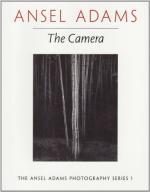|
This section contains 403 words (approx. 2 pages at 300 words per page) |
Ansel Adams is best known for his stark black-and-white photographs of nature and the American landscape. He was born and raised in San Francisco. Schooled at home by his parents, he received little formal training except as a pianist. A trip to Yosemite Valley as a teenager had a profound influence on him, and Yosemite National Park and the Sierra "range of light" attracted him back many times and inspired two great careers: photographer and conservationist. As he observed, "Everybody needs something to believe in [and] my point of focus is conservation." He used his photographs to make that point more vivid and turned it into an enduring legacy.
Adams was a painstaking artist, and some critics have chided him for an overemphasis on technique and for creating in his work "a mood that is relentlessly optimistic." Adams was a careful technician, making all of his own prints (reportedly hand-producing over 13,000 in his lifetime), sometimes spending a whole day on one print. He explained: "I have made thousands of photographs of the natural scene, but only those images that were most intensely felt at the moment of exposure have survived the inevitable winnowing of time."
He did winnow, ruthlessly, and the result was a collection of work that introduced millions of people to the majesty and diversity of the American landscape. Not all of Adams's pictures were "uplifting" or "optimistic" images of scenic wonders; he also documented scenes of overgrazing in the arid Southwest and of incarcerated Japanese-Americans in the Manzanar internment camp.
From the beginning, Adams used his photographs in the cause of conservation. His pictures played a major role in the late 1930s in establishing Kings Canyon National Park. Throughout his life, he remained an active, involved conservationist; for many years he was on the Board of the Sierra Club and strongly influenced the Club's activities and philosophy.
Ansel Adams's greatest bequest to the world will remain his photographs and advocacy of wilderness and the national park ideals. Through his work he not only generated interest in environmental conservation, he also captured the beauty and majesty of nature for all generations to enjoy.
Resources
Books
Adams, Ansel. Ansel Adams: An Autobiography. New York: New York Graphic Society, 1984.
Periodicals
Cahn, R. "Ansel Adams, Environmentalist." Sierra 64 (May–June 1979): 31–49.
Grundberg, A. "Ansel Adams: The Politics of Natural Space." The New Criterion 3 (1984): 48–52.
|
This section contains 403 words (approx. 2 pages at 300 words per page) |


